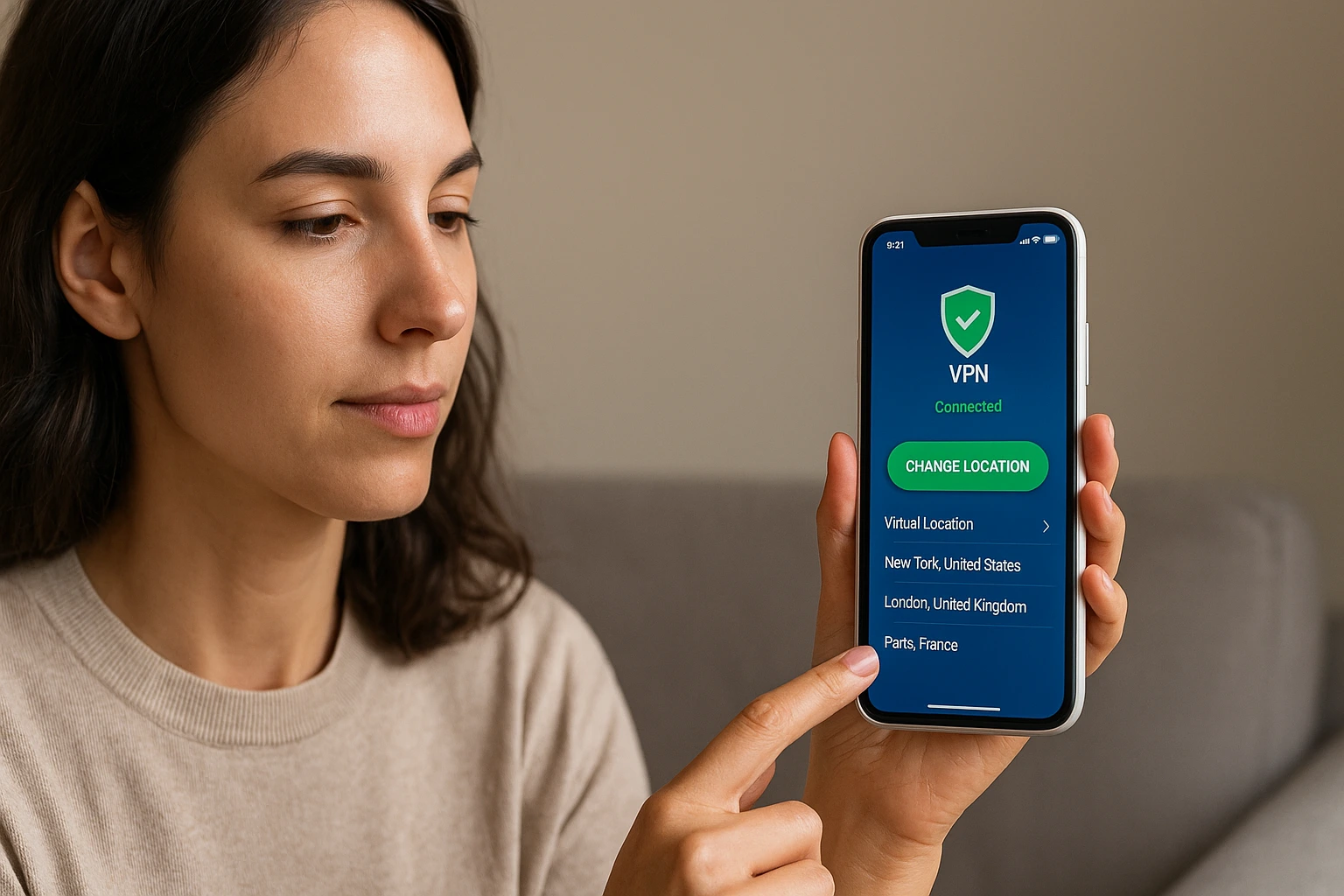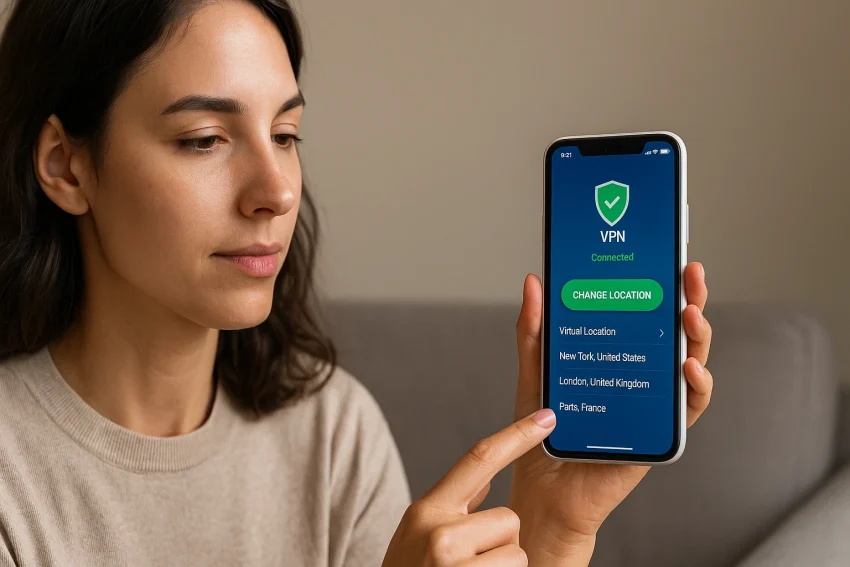Location spoofing on iPhones—faking your GPS location—isn’t just a tech trick for gamers anymore. It’s become an essential tool for protecting privacy, accessing restricted content, testing apps, and even unlocking new levels in location-based games. If you’ve ever asked yourself, “How to fake location on iPhone without jailbreaking?”, the answer is a confident yes. In this guide, we’ll explore how to spoof your location safely, legally, and without jailbreaking, starting with the key reasons people do it.
Why Spoof Your iPhone Location?
Apple devices are built with powerful GPS and location services that power everything from maps to social media check-ins. But there are many valid reasons why users might want to bend that reality temporarily:
1. Privacy Protection
Many apps constantly request your location—even when you’re not actively using them. Spoofing your GPS coordinates can help hide your actual movements and protect your personal routine from data-hungry apps or potential tracking.
2. Access Geo-Restricted Content
Streaming services, app stores, and even websites offer content based on geographic region. With a virtual location change, you can:
- Watch content not available in your country.
- Access regional features in games or apps.
- Download region-specific apps from international App Stores.
3. Gaming Advantages
Games like Pokémon GO, Harry Potter: Wizards Unite, or Ingress rely heavily on location-based interaction. Spoofing your GPS allows you to:
- Reach rare in-game locations without physical travel.
- Participate in region-specific events.
- Simulate walking or driving for character movement.
4. App Testing for Developers
If you’re building a location-based iOS app, it’s inefficient (and often impossible) to travel just to test features. Spoofing lets developers simulate any location to ensure apps function properly across different regions.

Is It Safe and Legal to Spoof iPhone Location?
Apple doesn’t natively support location spoofing for good reason: it can be misused, especially in apps where location integrity is critical (banking, rideshare, etc.). However, spoofing your location using reputable third-party tools is generally safe if done ethically and within the terms of service of the apps you’re using.
Let’s break it down:
| Aspect | Details |
| Legal status | Generally legal for personal use; illegal only if used to deceive or defraud |
| Security | Safe when using reputable, well-reviewed tools |
| Jailbreak status | Spoofing without jailbreaking is safer, more stable, and preserves your warranty |
| Risks to avoid | Avoid shady or unverified apps that may steal data or install malware |
Best Practice: Never use spoofing for activities that violate app policies (e.g., faking location in competitive games without consent), and always use apps that prioritize encryption and user control.
Why You Should Avoid Jailbreaking
While jailbreaking can open the door to more extensive system-level location tweaks, it comes with serious risks:
- Voids your iPhone warranty
- Exposes your device to malware and instability
- Can cause location-based services to behave unpredictably
- May break after iOS updates
Spoofing your iPhone’s location without jailbreaking is the modern, risk-free approach—and thankfully, today’s tools make it surprisingly easy.
1. Use Professional Location Changer Tools (Most Reliable)
If you want a secure, stable, and jailbreak-free method, desktop-based location changers are the gold standard. These apps connect your iPhone to a PC or Mac, allowing you to set a custom location and simulate GPS movement. They’re widely used by developers, gamers, and privacy-conscious users.
Top Tools to Consider:
| Tool | Highlights |
| TunesKit Location Changer | One-click teleportation, simulate movement, joystick mode, multi-spot path |
| iMyFone AnyTo | Supports both iOS & Android, beginner-friendly interface, customizable routes |
| LocaChange | Lightweight, fast, compatible with latest iOS versions, no jailbreak needed |
General Steps to Use Desktop Location Changers:
- Download & install the tool (from the official website) on your PC or Mac.
- Connect your iPhone to your computer via USB.
- Launch the app and allow it to detect your device.
- Search or click on the map to select your desired location.
- Click “Move” or “Start” to teleport your iPhone to that spot.
- Optionally, simulate routes by selecting start and end points (walk, cycle, drive).
Once activated, your iPhone will report the spoofed location system-wide, fooling all location-based apps—even without an active internet connection.
2. Use Mobile Apps (No Computer Required)
For users who want a more mobile-friendly method, there are now iOS apps available on the App Store or through official channels that allow basic spoofing directly from the device. These tools are slightly more limited than desktop versions but still highly effective for on-the-go location changes.
Recommended Apps:
- iGo Location Spoofer: Lightweight app with one-tap GPS spoofing. Easy to install and configure. Good for social media and navigation tweaks.
- iAnyGo iOS App: Offers teleportation, route simulation, and compatibility with popular location-based games—all without needing a computer.
How to Use Mobile Spoofing Apps:
- Install the app via App Store or the developer’s site (check compatibility).
- Open the app and grant necessary location permissions.
- Search or drag the map to set your fake GPS location.
- Tap “Activate” to begin spoofing.
- Check your desired app (like Maps or Pokémon GO) to verify the new location.
Tip: These apps may work best when combined with Precise Location disabled in iOS settings for specific apps (Settings > Privacy > Location Services).
3. Use Developer Tools (Advanced Users Only)
If you’re a developer or tech-savvy user, Apple’s own tools offer another option. Xcode, the official development platform for iOS, allows for location simulation in app testing environments. While not designed for everyday spoofing, it’s a completely native method for safe simulation—though it requires a Mac and basic Xcode knowledge.
Xcode Setup:
- Download Xcode from the Mac App Store.
- Connect your iPhone and create a dummy app (or use your existing project).
- In the Debug > Simulate Location menu, select from preset locations or add GPX files for custom positions.
Plist Editing or iBackupBot methods also exist but are highly technical and not recommended unless you’re familiar with file-level system changes.
Methods to Avoid
Not all spoofing methods are created equal. To keep your iPhone secure and stable, avoid the following:
Jailbreaking
- Breaks Apple’s warranty and compromises security
- Makes your device vulnerable to malware and crashes
- Often unstable after iOS updates
Unverified Third-Party Tools
- Many fake location apps on unofficial websites are malicious or poorly developed
- These may steal data, inject malware, or brick your device
Stick to tools from trusted developers with verified user reviews and established reputations.
Why Privacy Still Matters—Even with a Spoofed Location
Many users mistakenly assume that once their GPS is spoofed, their privacy is protected. But here’s the catch:
Your spoofed location is still being read by dozens of apps—navigation, social media, weather, games, and more.
If you’re not actively managing permissions and visibility, your fake location becomes just as exposed as your real one.
Potential Risks:
- Social media apps may broadcast your spoofed location unintentionally.
- Games like Pokémon GO can flag suspicious location changes, risking bans.
- Messaging or dating apps might leak spoofed data, confusing or misleading others.
Even when you control the location, it’s vital to control the access to it.
Best Practices for Secure Location Spoofing
To maintain both freedom and security, follow these expert-recommended tips:
1. Manage App Permissions Carefully
- Go to Settings > Privacy & Security > Location Services
- For each app:
- Choose “While Using the App” or “Ask Next Time”
- Disable Precise Location unless accuracy is required
2. Avoid Sharing Spoofed Location on Social Platforms
- Turn off location tagging for posts, photos, and videos
- Don’t share spoofed locations in apps with automatic location publishing
3. Use VPN in Tandem
- A VPN (Virtual Private Network) can mask your IP address to match your GPS location
- This reduces data mismatch that some apps use to detect spoofing
Enter: Number Tracker — Privacy-Focused Location Sharing

If you want to spoof your GPS and manage who can see your whereabouts—even your fake ones—Number Tracker is a game-changer. Unlike apps that passively log your data or share it with third parties, Number Tracker puts you in full control.
Key Features of Number Tracker:
| Feature | How It Helps You Stay Private |
| User Consent-Based Tracking | You decide exactly when and with whom your (real or fake) location is shared |
| End-to-End Encryption | Keeps your location data safe during transfer and storage |
| Offline Location Recording | Shares last known location if your device goes offline or on Airplane Mode |
| Minimal Data Retention | No unnecessary tracking or background location history |
Whether you’re using location spoofing for testing, travel, gaming, or safety, Number Tracker ensures that your data stays in your hands—not floating through unknown servers.
Summary: Spoof Smarter, Stay Safer
Let’s recap everything you need to know to spoof your iPhone location like a pro—without jailbreak, and without risk:
Key Takeaways:
- Why Spoof? Privacy, regional content access, gaming enhancements, and app testing.
- Best Tools (No Jailbreak Needed):
- Desktop: TunesKit, iMyFone AnyTo, LocaChange
- Mobile: iGo Location Spoofer, iAnyGo iOS App
- Advanced: Xcode for developers
- Avoid: Jailbreaking and shady third-party apps.
- Protect Your Data: Control app permissions, use VPNs, and consider Number Tracker for secure, consent-based location sharing.
By combining trusted tools, good habits, and privacy-first apps, you can take full control of your iPhone’s location settings—and use them exactly how and where you want.




